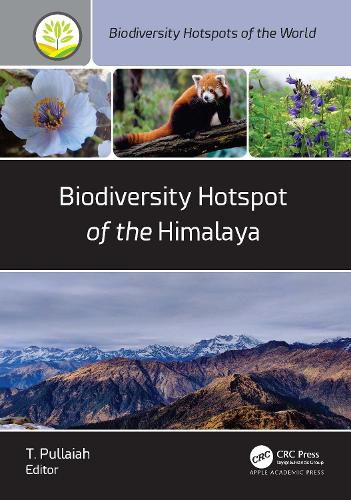Readings Newsletter
Become a Readings Member to make your shopping experience even easier.
Sign in or sign up for free!
You’re not far away from qualifying for FREE standard shipping within Australia
You’ve qualified for FREE standard shipping within Australia
The cart is loading…






Biodiversity is declining at an alarming rate due to anthropogenic activities around the world. This book is the second volume in the new series Biodiversity Hotspots of the World, which highlights the 36 hotspot regions of the world, regions that have been designated as reaping maximum benefit from preservation efforts. This series is our humble attempt to document these hotspots as a conservation and preservation measure.
The concise volumes in this series focus on the most interesting and important properties of these hotspots, covering physiography and climatology; vegetation and forest types; amphibian and reptile biodiversity; genetic diversity of crops, plants, fishes, butterflies, insects, birds, mammals, angiosperms, and gymnosperms; and much more. And of course, the unique threats and conservation efforts for the areas are addressed as well.
The Himalayan Mountains are the highest mountain range in the world and include Mount Everest as well as eight other highest peaks of the world. While it is difficult to document the biodiversity of this inhospitable terrain, we do know that out of the 9,000 different species of plants recorded in the area, 3,500 plants are endemic to the Eastern Himalaya region. Anthropogenic activities including deforestation, fragmentation of habitats, pollution, high population, climate change, and poaching of wildlife pose serious threats to the biodiversity of the region. The highlands have exceptionally rich biodiversity, high endemism, and over 160 globally threatened species, including the densest population of Bengal tigers and the three largest herbivores on the continent: the Asian elephant, greater one-horned rhinoceros, and wild water buffalo. The region boasts the world's richest counts of alpine flora within its temperate broad-leaved forests, with a total of 10,000 species of plants.
This volume, Biodiversity Hotspot of the Himalayas, as well as the other volumes in this series, will be essential resources for researchers and practitioners in the fields of conservation biology, ecology, and evolution as the series concisely records the existing biodiversity of these hotspots of the world.
$9.00 standard shipping within Australia
FREE standard shipping within Australia for orders over $100.00
Express & International shipping calculated at checkout
Biodiversity is declining at an alarming rate due to anthropogenic activities around the world. This book is the second volume in the new series Biodiversity Hotspots of the World, which highlights the 36 hotspot regions of the world, regions that have been designated as reaping maximum benefit from preservation efforts. This series is our humble attempt to document these hotspots as a conservation and preservation measure.
The concise volumes in this series focus on the most interesting and important properties of these hotspots, covering physiography and climatology; vegetation and forest types; amphibian and reptile biodiversity; genetic diversity of crops, plants, fishes, butterflies, insects, birds, mammals, angiosperms, and gymnosperms; and much more. And of course, the unique threats and conservation efforts for the areas are addressed as well.
The Himalayan Mountains are the highest mountain range in the world and include Mount Everest as well as eight other highest peaks of the world. While it is difficult to document the biodiversity of this inhospitable terrain, we do know that out of the 9,000 different species of plants recorded in the area, 3,500 plants are endemic to the Eastern Himalaya region. Anthropogenic activities including deforestation, fragmentation of habitats, pollution, high population, climate change, and poaching of wildlife pose serious threats to the biodiversity of the region. The highlands have exceptionally rich biodiversity, high endemism, and over 160 globally threatened species, including the densest population of Bengal tigers and the three largest herbivores on the continent: the Asian elephant, greater one-horned rhinoceros, and wild water buffalo. The region boasts the world's richest counts of alpine flora within its temperate broad-leaved forests, with a total of 10,000 species of plants.
This volume, Biodiversity Hotspot of the Himalayas, as well as the other volumes in this series, will be essential resources for researchers and practitioners in the fields of conservation biology, ecology, and evolution as the series concisely records the existing biodiversity of these hotspots of the world.